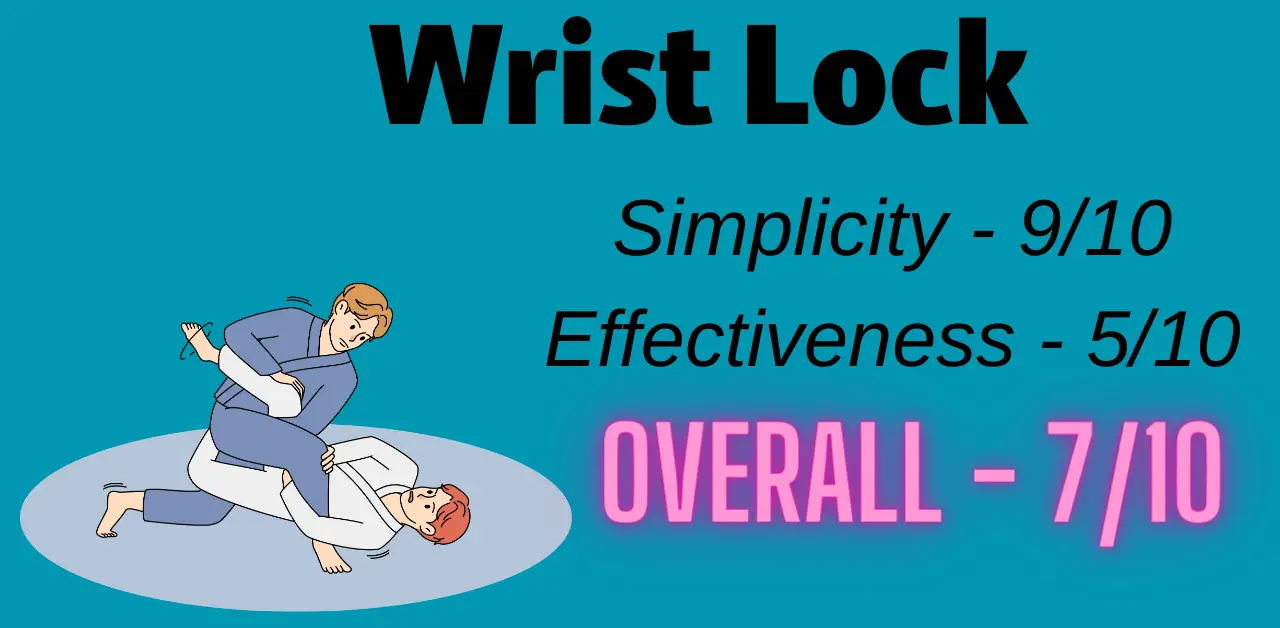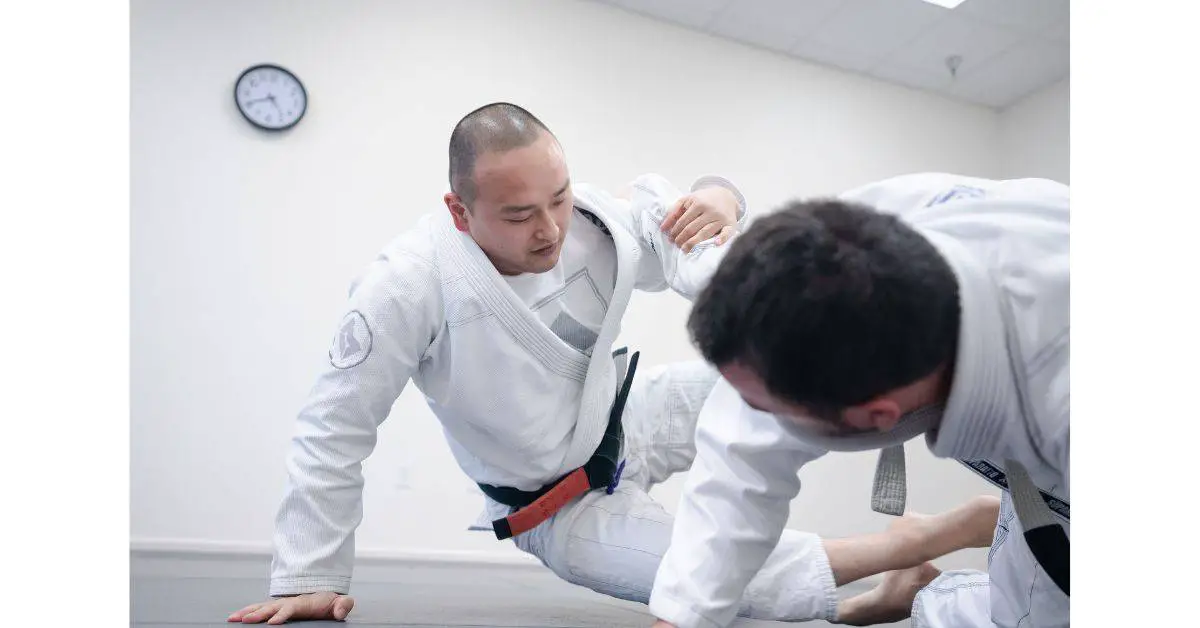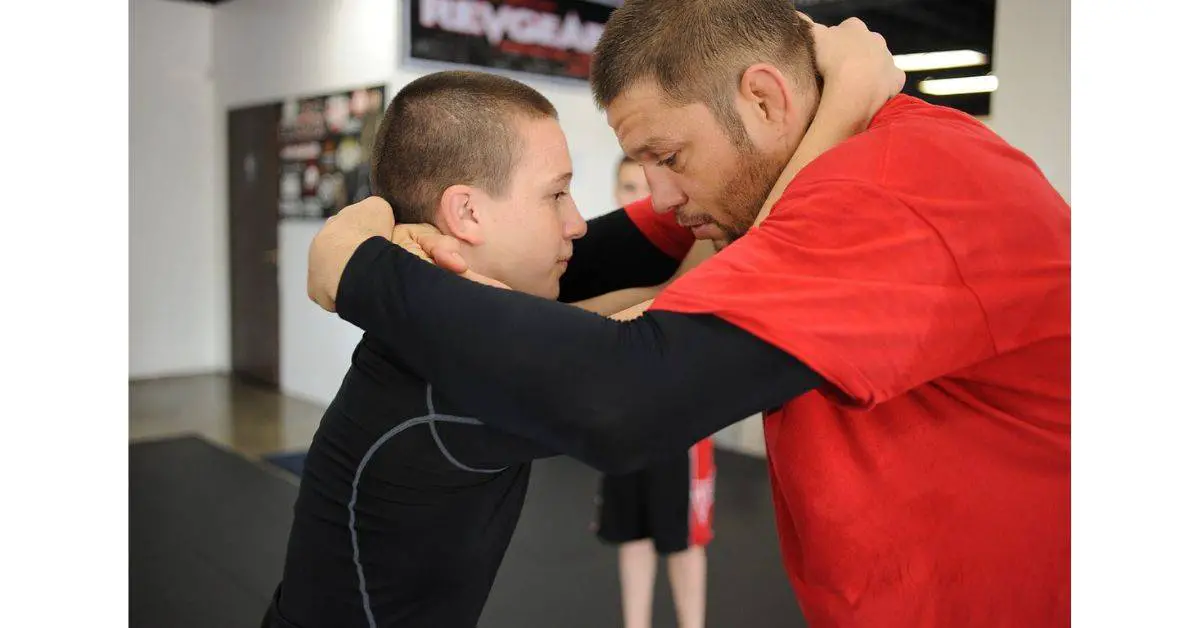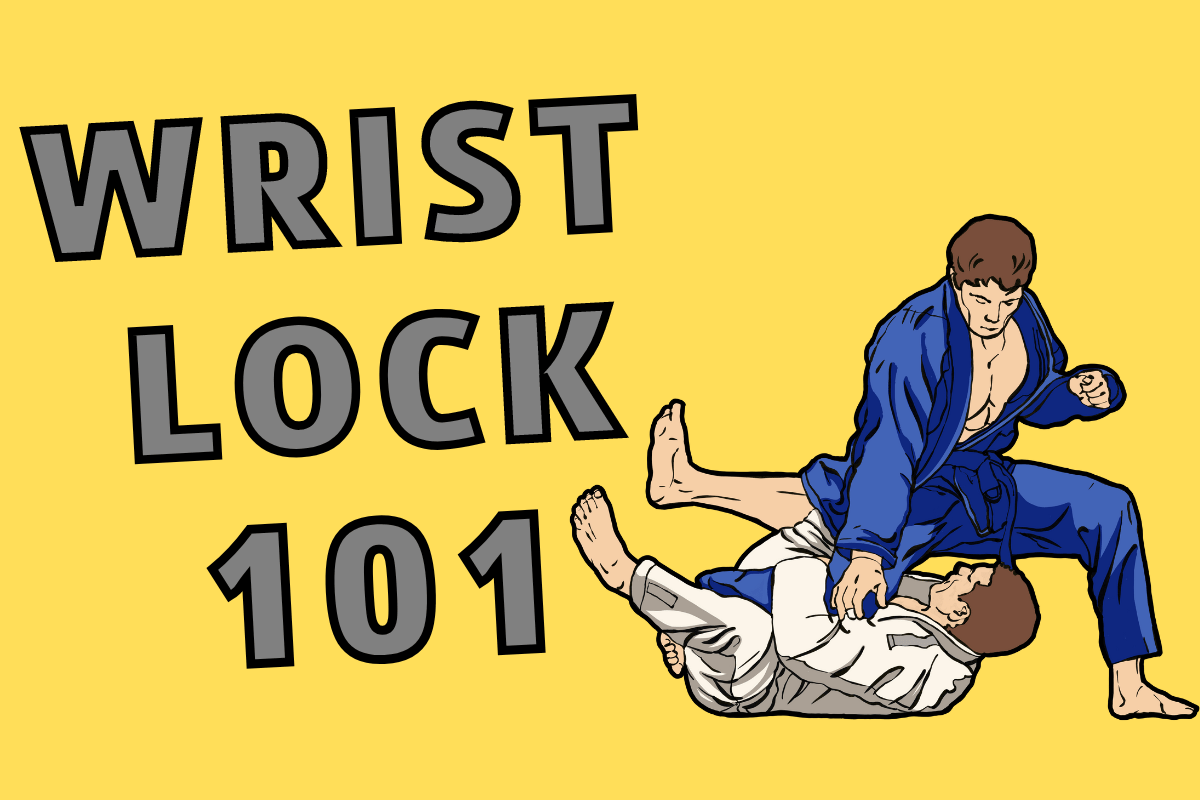If you’ve ever wanted to get a quick submission and win more BJJ fights, learning the wrist lock is for you. While more advanced trainees won’t allow you to submit them that easily, you can still learn this submission and make it a part of your broad toolbox.
Mastering the wrist lock isn’t hard. The one difficult step is the preparation for this submission. The preparation includes isolating the opponent’s forearm and wrist from the rest of the body. We typically do that with our hands. Once done, we can apply pressure on the wrist and wait for the tap.
This submission is one of the easiest and simplest BJJ grapples to understand. Nonetheless, because of its simplicity, many advanced trainees will not allow you to perform it on them.
As a result, it’ll work better in the early stages of your training than in the later stages.
And still, if the opponent is aware that you can submit him with a wrist lock at any moment, he will act differently, giving you the advantage immediately. Thus, don’t skip learning it, although many BJJ gyms won’t endorse it.
However, it’s an entirely legal and moral technique (as we’ll see later in the article.)
If you want to learn to perform the Armbar (also a finishing submission), follow the link to an article of mine on the topic.

Let’s dive in!
What is a wrist lock?
BJJ teaches many finishing submissions. These will be critical to know in a real fight to ensure you can finish the fight in under 5 seconds. While it might sound unrealistic to some, you might understand how it’s possible, especially if you have been grappling for a few months.
The wrist lock is a finishing move in Brazilian Jiu-Jitsu (BJJ), when you apply pressure to either side of the opponent wrist, making him tap out since it involves significant amounts of pain. Likewise, some MMA (UFC) fighters learn and use this grapple to finish fights quickly and effectively.
This grapple is known to work on novices. That is why you can use it to end a real fight swiftly.
Think about it: the average person on the street doesn’t know how to defend against your grappling. Even most martial artists won’t know how to do that, so the average person on the street stands no chance.
You can isolate the person’s forearm by controlling his elbow and wrist to finish the fight swiftly. You’ll find almost no resistance from the other hand, as the opponent won’t know how to defend against an advanced grappler.
Now, let’s see how you can perform it correctly. We’ll then discuss many variations you can use to execute the wrist lock correctly. Stay tuned!
Before we dive in, if you want to learn an extremely effective BJJ submission and become a better grappler, follow the link to read about the Straight Arm Lock submission and how you can learn it today!
How to perform the wrist lock
To perform the wrist lock, you must first isolate the opponent’s forearm from the rest of his body. If the opponent’s forearm isn’t isolated but instead – moves with the rest of the body, he will be able to maneuver himself in a way that the wrist lock won’t affect him.
To perform the wrist lock submission, you must first isolate the opponent’s forearm from the rest of his body. Then, you can maneuver yourself to have access to his wrist. The only step that’s left is to bend the wrist and apply pressure in a way that will force the opponent to tap out.
As you can see, it’s not as hard to perform as many people might think.
I’m confident that it’s because it’s an easy-to-understand technique. You don’t have to train Jiu-Jitsu for a year to understand that bending the wrist is uncomfortable and painful.
If you want to become a better BJJ grappler, follow the link to learn about the rear naked choke and how you can learn it today!
A step-by-step guide to performing the wrist lock in BJJ
- Get into a dominant position: To apply a wrist lock, you need to be in a dominant position, such as side control or mount, where you have control over your opponent’s arm.
- Control your opponent’s arm: Use your hands or legs to control your opponent’s wrist and elbow. You’ll need to isolate their wrist and create a bend in their arm to perform a wrist lock.
- Rotate their hand: Once you have control of your opponent’s arm, rotate their hand so that their palm is facing up. This will put pressure on the wrist joint. You can bend the wrist to the other side if you’re in a position that allows you to do that.
- Apply pressure: Use your other hand to push down on your opponent’s hand while keeping the wrist bent. You can also apply pressure by using your body weight.
- Wait for the tap: Once you have applied enough pressure to the wrist joint, your opponent will feel pain and tap out. Release the lock immediately once they tap.

That is the perfect recipe for a quick submission. However, don’t think advanced trainees will allow you the perfect opportunity to go for a quick wrist lock to finish the fight. That won’t happen as often.
You’ll have to work hard to create the perfect angle to isolate the forearm from the rest of the body. Only then will you be able to create an angle to isolate the opponent’s wrist.
If you want to learn more about the Triangle choke and what makes it so effective, follow the link.
Different variations of the wrist lock
The wrist lock has many variations you can use, and you can use many options when executing it. This section will mention a few of them to ensure you’ll become capable of using a broad spectrum of these variations.
The triangle choke entry wrist lock
When you go for a triangle choke, you will end up in a situation where you can use the wrist lock. However, it will take more practice than you might think. So, here’s how you do it:
- Be in a closed-guard position
- Push the opponent toward you
- Kick the opponent’s leg outward
- Plant your two legs on top
- Place his elbow on your belly
- Apply inward pressure on his wrist
- Wait for the tap out
Standing wrist lock (if the opponent grabs your wrist)
This variation is especially suitable for self-defense, as most people won’t know what to do when you go for any variation of the wrist lock.
It’s also designed to finish fights quickly. But, it does require the opponent first to grab your wrist (which is an instinctive move.) Here’s how to do it:
- Both people are standing
- Your opponent needs first to grab your wrist
- Turn his hand up
- Grab his wrist (his thumb)
- Twist your hand to escape the opponent’s hold
- Grab his knuckles
- Apply down pressure
- Wait for the tap out
When the opponent throws a punch (in mount)
This is also a reasonably specific scenario. And still, you probably start to understand that you can perform the wrist lock from almost any position. So you need to stay creative to really get results from this excellent submission.
If you’re on guard and the opponent punches you, you can evade it and grab the opponent’s arm. You don’t have to evade it, but it’ll be best if you do.
Here’s how you do it:
- The opponent is in mount
- He punches you
- You grab his end
- Use your belly as leverage
- Apply pressure through your belly and twist his wrist
- Make sure to twist his wrist inwards (toward your legs)
- Wait for the tap out
If the opponent is in a closed guard position and you can’t get through: I have another article that breaks down the most effective pass in BJJ, the Toreando pass. Pass anyone’s guard using it, so give it a read.
Which martial arts teach the wrist lock?
Many martial arts teach only the most effective fighting techniques. For that reason, they’ll teach various grappling moves (only grappling-based martial arts, such as judo, Jiu-Jitsu, and wrestling.) Of course, then, many martial arts will teach the wrist lock.
BJJ and MMA are the two martial arts that teach the wrist lock. It originates in Jiu-Jitsu. But, MMA fighters saw its potential and implemented it into their game. That is why you’ll sometimes see this submission in the UFC.
Likewise, many self-defense systems, such as Krav Maga, teach such techniques in different variations.
While BJJ and MMA are the primary martial arts, others teach them. Who knows, you might face someone from a different fighting style that will use it on you.
That is why you have to know how to escape it, which we’ll discuss two sections from now. Stay tuned for that.
If you want to learn the Kimura, another highly effective BJJ finishing move, follow the link!
Are wrist locks allowed in BJJ?
Wrist locks are allowed in BJJ if you’re an adult that’s a blue belt and above. They understand that it’s a technique that can injure someone quickly. Naturally, then, you can’t use it if you’re a white belt, as it’ll be quite easy, to say the least, to injure someone’s wrist while you’re using it.

But, contrary to what most people might think, the wrist lock is a legal move in grappling-based martial arts and many self-defense systems.
It’s so effective and simple, so why give up learning and using it?
How to escape the wrist lock in BJJ
You need to know one thing to escape the wrist lock in BJJ. Before I reveal it, however, if you want to learn how to win more BJJ fights, follow the link.
Back to our topic:
You must release your elbow from the opponent’s attack to escape the wrist lock in BJJ. You can do that in various ways, such as applying pressure back or going for an offensive submission from the position you’re currently in. First, however, you must release your elbow to escape this submission.
If your wrist and elbow (or forearm) are stuck, you’ll soon be getting your wrist locked. Therefore, your primary goal should immediately escape the opponent’s hold on these parts.
Use everything you can use to do that. Get creative.
Are wrist locks effective?
Many submissions aren’t as effective in real life as on the mat while wearing a Gi. Therefore, it’ll be best to know whether the submission we’ve discussed in the article applies to real life.
Wrist locks are a very effective technique in BJJ and MMA. If you successfully perform one, you’ll be able to win the fight in under a few seconds. It’s also practical and effective because the average person on the street doesn’t know how to defend against it. So naturally, then, it’s a quick win for you.
Once you’re in your wrist lock position, the opponent will have difficulty escaping. Unless he has trained it many times before, you’ll likely win and force the tap out quickly if you’re in a position to do so.
However, remember that it’s easy to injure someone if you execute the wrist lock on him. So please be careful when you execute it: you don’t want to cause years of pain to your training partner.
Final words
Many people perceive the wrist lock for what it is not. It’s not an illegal or dirty move. You should utilize this technique, as it can be highly effective.
By the way, it’s highly effective in street fights and self-defense scenarios. As such, I don’t see a reason not to learn and use it to your liking.
Of course, the wrist is a body part that you can injure quickly. I have carried a wrist injury for the past 5 years because of a tiny mistake. As such, you must be fully attentive to your opponent when performing the wrist lock.
Don’t be afraid to apply pressure, but be careful when you do so. Treat your opponent as if it’s yourself!
But actually, the wrist lock isn’t what I perceive to be the most effective grapple. Another article lists the 7 most effective BJJ techniques (spoiler: the wrist lock is a part of it) and how to win more BJJ fights by learning them. So, read it if you want to become a better grappler!

